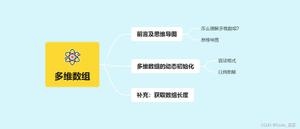Java实现在线语音识别
本文为大家分享了Java实现在线语音识别的具体方法,供大家参考,具体内容如下
利用讯飞开发平台作为第三方库
首先需要在讯飞开发平台下载SDK,网址为,讯飞开发平台,这些SDK 下载都是免费的,当然你需要先注册。在SDK 中不仅包含相应的jar包,还有一些相应的demo,可以供你参考学习
在我们下载下来第一个SDK 之后就可以进行开发了,讯飞的SDK 给我们提供了详尽而强大的函数支持,下面我就从代码的角度来进行一些解释。
代码
package myVoice;
import java.awt.Button;
import java.awt.Font;
import java.awt.Frame;
import java.awt.GridLayout;
import java.awt.Panel;
import java.awt.TextArea;
import java.awt.event.ActionEvent;
import java.awt.event.ActionListener;
import java.lang.reflect.Parameter;
import java.util.ArrayList;
import javax.swing.ImageIcon;
import javax.swing.JFrame;
import javax.swing.JLabel;
import com.iflytek.cloud.speech.RecognizerListener;
import com.iflytek.cloud.speech.RecognizerResult;
import com.iflytek.cloud.speech.SpeechError;
import com.iflytek.cloud.speech.SpeechRecognizer;
import com.iflytek.cloud.speech.SpeechUtility;
import com.iflytek.util.DebugLog;
import com.iflytek.util.JsonParser;
import com.iflytek.util.Version;
public class VoiceSpeech extends Frame implements ActionListener {
Button startBtn;
Button stopBtn;
TextArea textArea;
// 语音听写对象
SpeechRecognizer speechRecognize;
private static final String DEF_FONT_NAME = "宋体";
private static final int DEF_FONT_STYLE = Font.BOLD;
private static final int DEF_FONT_SIZE = 30;
private static final int TEXT_COUNT = 100;
public VoiceSpeech() {
// 初始化听写对象
speechRecognize = SpeechRecognizer.createRecognizer();
// 设置组件
startBtn = new Button("start");
stopBtn = new Button("stop");
textArea = new TextArea();
Panel btnPanel = new Panel();
Panel textPanel = new Panel();
// Button startBtn = new Button("开始");
//添加监听器
startBtn.addActionListener(this);
stopBtn.addActionListener(this);
btnPanel.add(startBtn);
btnPanel.add(stopBtn);
textPanel.add(textArea);
add(btnPanel);
add(textPanel);
// 设置窗体
setLayout(new GridLayout(2, 1));
setSize(400, 300);
setTitle("语音识别");
setLocation(200, 200);
setVisible(true);
}
public void actionPerformed(ActionEvent e) {
if (e.getSource() == startBtn) {
textArea.setText("*************你说的是:");
if (!speechRecognize.isListening())
speechRecognize.startListening(recognizerListener);
else
speechRecognize.stopListening();
} else if (e.getSource() == stopBtn) {
speechRecognize.stopListening();
}
}
/**
* 听写监听器
*/
private RecognizerListener recognizerListener = new RecognizerListener() {
public void onBeginOfSpeech() {
// DebugLog.Log( "onBeginOfSpeech enter" );
// ((JLabel) jbtnRecognizer.getComponent(0)).setText("听写中...");
// jbtnRecognizer.setEnabled(false);
}
public void onEndOfSpeech() {
DebugLog.Log("onEndOfSpeech enter");
}
/**
* 获取听写结果. 获取RecognizerResult类型的识别结果,并对结果进行累加,显示到Area里
*/
public void onResult(RecognizerResult results, boolean islast) {
DebugLog.Log("onResult enter");
// 如果要解析json结果,请考本项目示例的 com.iflytek.util.JsonParser类
String text =
JsonParser.parseIatResult(results.getResultString());
// String text = results.getResultString();
// JsonParser json = new JsonParser();
// String newTest = json.parseIatResult(text);
// textArea.setText(newTest);
textArea.append(text);
text = textArea.getText();
if (null != text) {
int n = text.length() / TEXT_COUNT + 1;
int fontSize = Math.max(10, DEF_FONT_SIZE - 2 * n);
DebugLog.Log("onResult new font size=" + fontSize);
int style = n > 1 ? Font.PLAIN : DEF_FONT_SIZE;
Font newFont = new Font(DEF_FONT_NAME, style, fontSize);
textArea.setFont(newFont);
}
if (islast) {
iatSpeechInitUI();
}
}
public void onVolumeChanged(int volume) {
DebugLog.Log("onVolumeChanged enter");
if (volume == 0)
volume = 1;
else if (volume >= 6)
volume = 6;
// labelWav.setIcon(new ImageIcon("res/mic_0" + volume + ".png"));
}
public void onError(SpeechError error) {
DebugLog.Log("onError enter");
if (null != error) {
DebugLog.Log("onError Code:" + error.getErrorCode());
textArea.setText(error.getErrorDescription(true));
iatSpeechInitUI();
}
}
public void onEvent(int eventType, int arg1, int agr2, String msg) {
DebugLog.Log("onEvent enter");
}
};
/**
* 听写结束,恢复初始状态
*/
public void iatSpeechInitUI() {
// labelWav.setIcon(new ImageIcon("res/mic_01.png"));
// jbtnRecognizer.setEnabled(true);
// ((JLabel) jbtnRecognizer.getComponent(0)).setText("开始听写");
}
public static void main(String[] args) {
// 初始化
StringBuffer param = new StringBuffer();
param.append( "appid=" + Version.getAppid() );
// param.append( ","+SpeechConstant.LIB_NAME_32+"=myMscName" );
SpeechUtility.createUtility( param.toString() );
VoiceSpeech t = new VoiceSpeech();
}
}
代码解析
1.SpeechRecognizer类,语音识别类,语音识别,包括听写、语法识别功能。本类使用单例,调用者使用本类的对象,只需要通过createRecognizer()创建 一次对象后,便可一直使用该对象,直到通过调用destroy()进行单例对象销毁。调 用者可通过getRecognizer()获取当前已经创建的单例。我们在一开始导包,把相应的类导入,然后声明语音识别类,然后在VoiceSpeech类的构造器中初始化。
2.在SpeechRecognizer类中有很多有关语音识别的方法,
(1)startListening方法,开始进行语音识别,其方法的参数是一个回调函数,这个方法是另一个类RecognizerListener声明的实例,在其匿名内部类中重写关键的方法,借此到底我们想要的结果,我们在onResult方法中重写,把识别的结果通过json解析之后(识别的结果默认是json格式),把它依次添加到文本栏上面,之后我们对文本栏的内容进行文字字体大小等的设定
(2)stopListening方法,等录音结束之后,调用该方法,把录音结果通过网络传输给讯飞远程识别平台进行解析,解析完成之后,把解析结果传送过来
3.在main方法中先要进行SpeechUtility.createUtility,这是讯飞SDK的初始化,相当于远程连接讯飞识别平台,因为Java现在还不支持离线识别,所以在进行识别方法调用之前,必须连接讯飞开发平台,这个方法的作用正是如此,其参数就是不同的识别版本
4.因为很多方法都是讯飞提供的,所以我们需要导入相应的包
具体如下
import com.iflytek.cloud.speech.RecognizerListener;
import com.iflytek.cloud.speech.RecognizerResult;
import com.iflytek.cloud.speech.SpeechError;
import com.iflytek.cloud.speech.SpeechRecognizer;
import com.iflytek.cloud.speech.SpeechUtility;
import com.iflytek.util.DebugLog;
import com.iflytek.util.JsonParser;//json解析类
import com.iflytek.util.Version;//版本类
这些在SDK 中都有
最终的结果
ps:因为只是注重识别功能,所以界面很丑。
以上是 Java实现在线语音识别 的全部内容, 来源链接: utcz.com/z/358181.html







